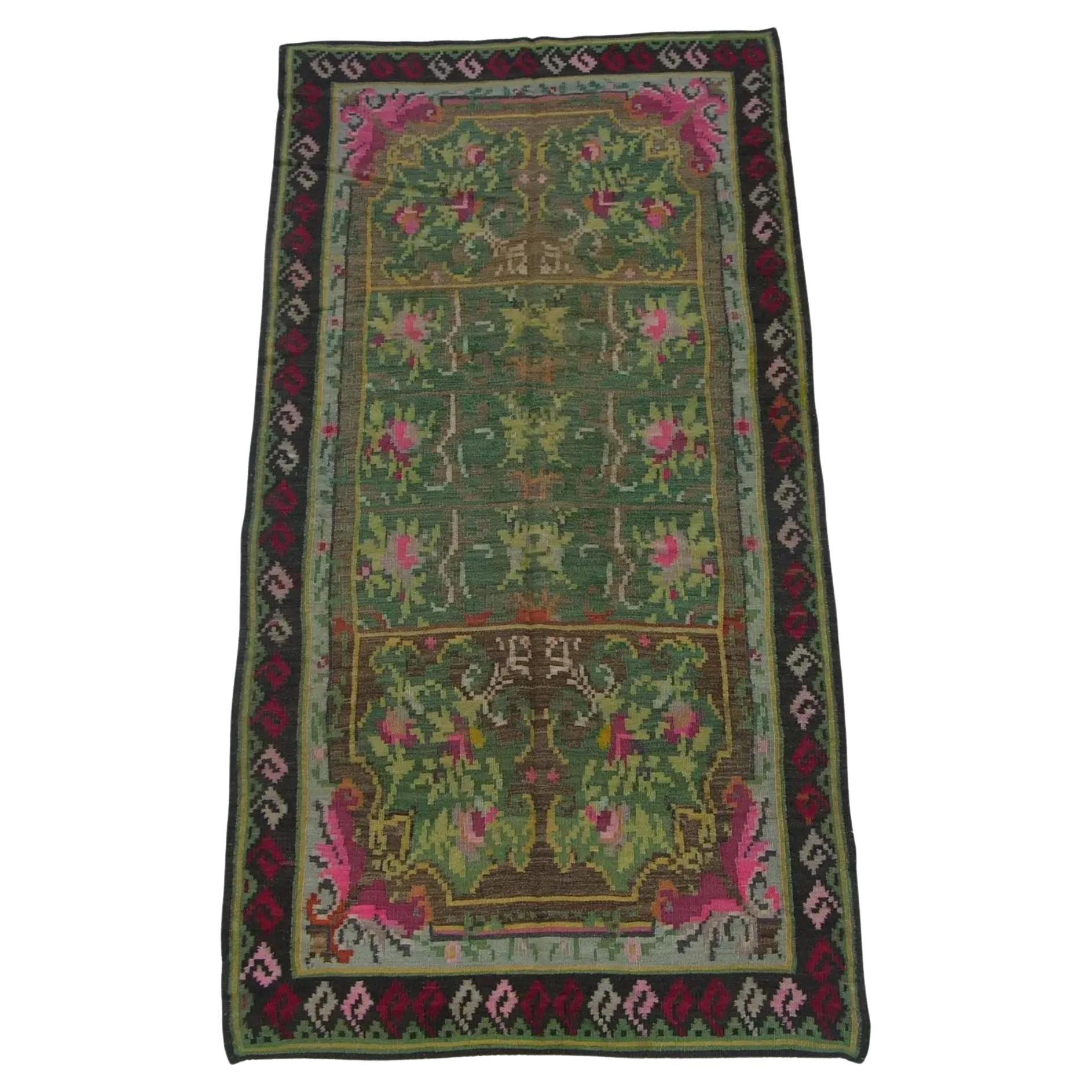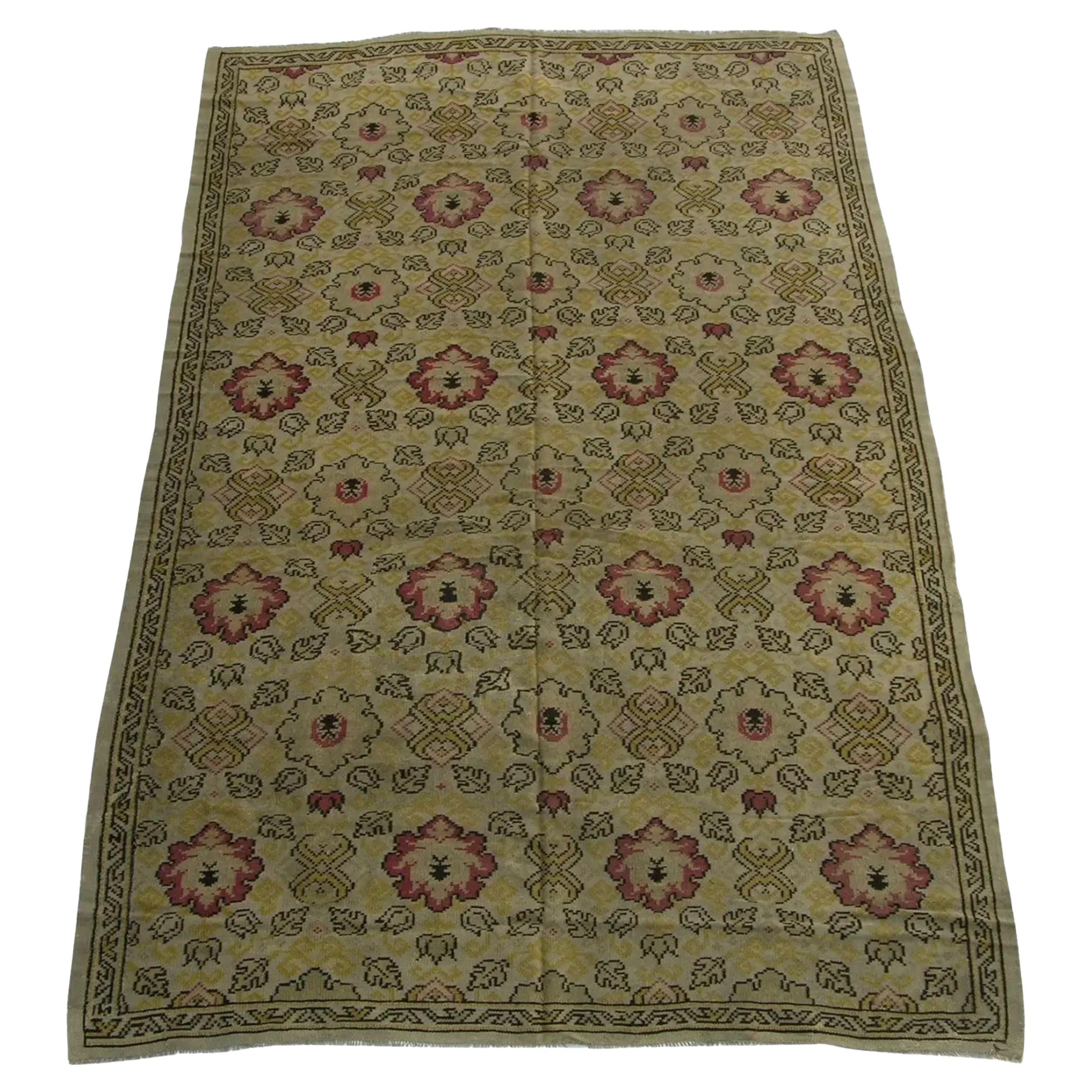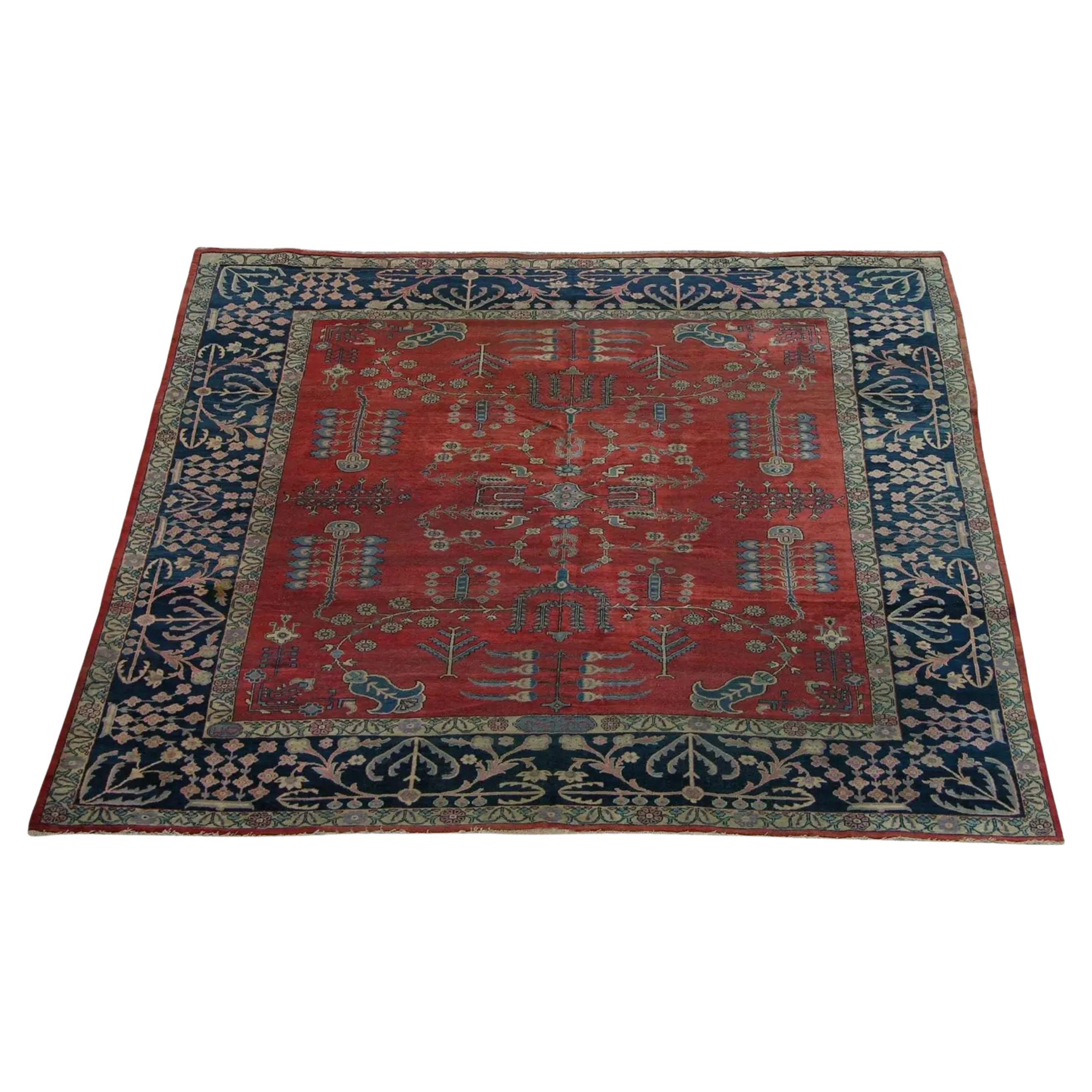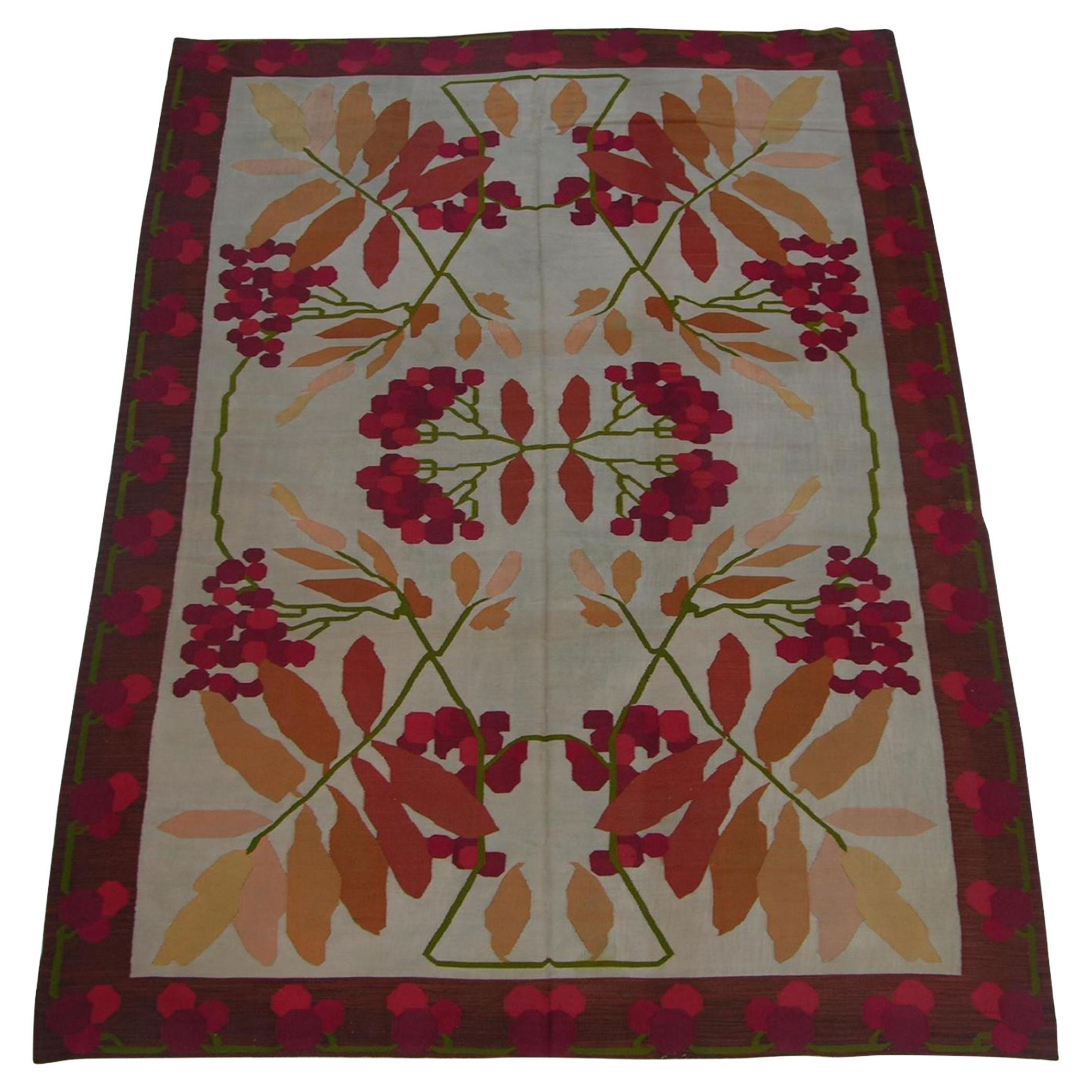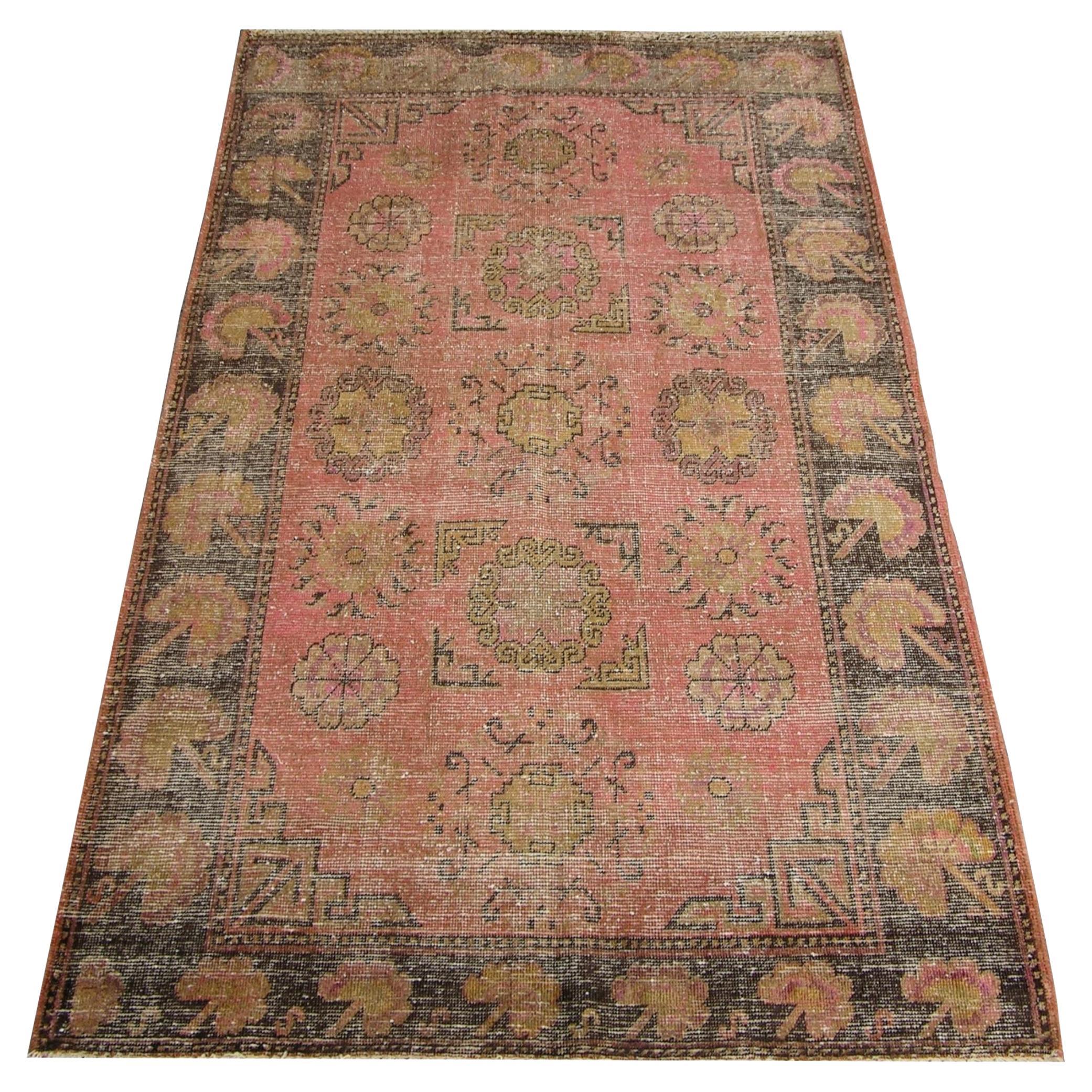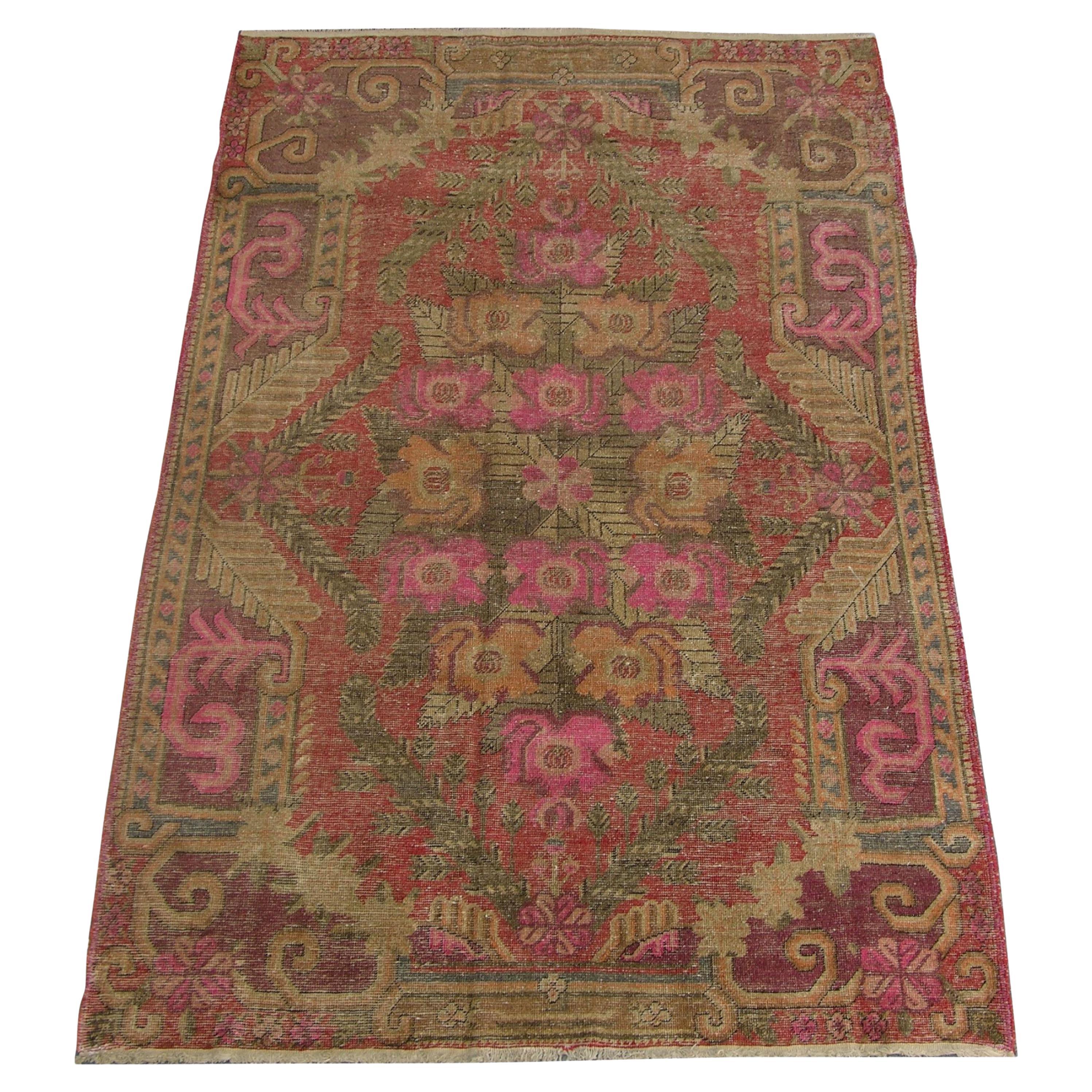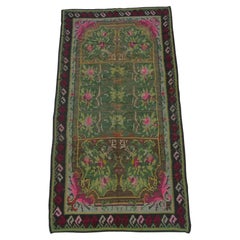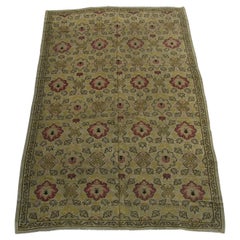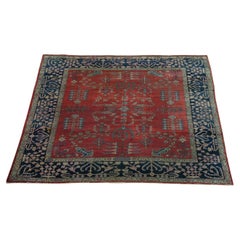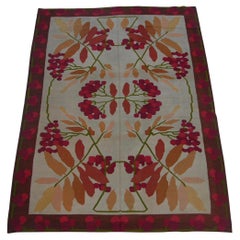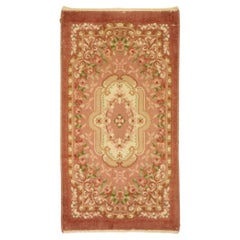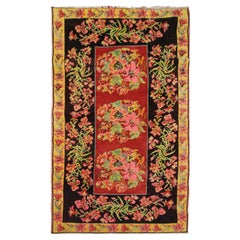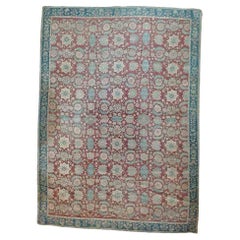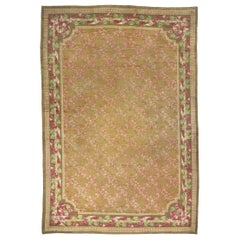Items Similar to 1900s Antique Floral Spanish Rug - 6'8'' X 5'0''
Want more images or videos?
Request additional images or videos from the seller
1 of 5
1900s Antique Floral Spanish Rug - 6'8'' X 5'0''
$6,450
£4,955.30
€5,693.58
CA$9,072.72
A$10,192.80
CHF 5,325.75
MX$124,407.88
NOK 67,621.51
SEK 63,651.40
DKK 42,487.60
About the Item
Spanish Rugs – Although Spain is not generally thought of as a rug producing region, Spanish rugs represent the most venerable and honored tradition of rug production in Europe, going back to the time when much of Spain was part of the Islamic world. Still, the rugs woven in Spain were not Moorish products; native Spanish weavers had already learned the technique of making rugs by the fourteenth century, and they have continued to do so up to the twentieth century.
The antique Spanish rugs have a weave like no other pile rugs. These magnificent Spanish carpets are truly knotted, not looped, in staggered rather than superimposed rows. Their coloration has always been soft with dominant ivory grounds and pastel greens and yellows.
Although some early antique Spanish rugs imitated the designs and patterns of the antique Ottoman weavings, they soon developed a distinctive, uniquely Iberian or European style of vine scroll ornament. Early Spanish rug are highly desirable and coveted by collectors. This is contrast to the nineteenth and twentieth century Spanish made rugs which are sought after by consumers because they make excellent room size decorative rugs for many different home decorating aesthetics.
During the Islamic occupation, Spain was the first country in medieval Europe to make knotted pile rugs. Under the Islamic rules, the carpet weaving industry flourished from the 8th century through most of the 15th century.
The earliest existing Spanish carpets were woven during the 15th century and depict a multicultural lineage. Christian, Jewish, Muslim Arab and Berber populations co-existed for eight centuries and their combined artistic influence is reflected in their designs. By the 11th century, Spanish rugs were exported to the Orient, England and France.
Muslim and Christian princes and their courts admired and collected these magnificent antique Spanish rugs. By the 17th century, Spain’s economic depression coupled with the expulsion of Jews and Muslim artisans left the country artistically bankrupt. It was only with the help of rich patrons and the support of the monarchy, that the rug industry survived.
As a result, Spanish rug weaving followed the trends of France and England. They also followed the influences of the originality of diversity which gave way to a more Western and far more decorative approach.
About the Seller
5.0
Platinum Seller
Premium sellers with a 4.7+ rating and 24-hour response times
Established in 1920
1stDibs seller since 2023
63 sales on 1stDibs
Typical response time: <1 hour
- ShippingRetrieving quote...Shipping from: Los Angeles, US
- Return Policy
Authenticity Guarantee
In the unlikely event there’s an issue with an item’s authenticity, contact us within 1 year for a full refund. DetailsMoney-Back Guarantee
If your item is not as described, is damaged in transit, or does not arrive, contact us within 7 days for a full refund. Details24-Hour Cancellation
You have a 24-hour grace period in which to reconsider your purchase, with no questions asked.Vetted Professional Sellers
Our world-class sellers must adhere to strict standards for service and quality, maintaining the integrity of our listings.Price-Match Guarantee
If you find that a seller listed the same item for a lower price elsewhere, we’ll match it.Trusted Global Delivery
Our best-in-class carrier network provides specialized shipping options worldwide, including custom delivery.More From This Seller
View AllAntique Bessarabian Floral Rug 9'6'' X 4'10''
Located in Los Angeles, US
Antique BESSARABIAN Stylish Floral Design 9'6'' X 4'10''
Category
Antique Early 1900s Unknown Bessarabian Western European Rugs
Materials
Wool, Cotton
Early 19th Century Floral Bessarabian Rug
Located in Los Angeles, US
Antique Bessarabian Rugs / Kilims in both pile and tapestry weaving technique are some of the more beautiful carpets to have been produced in Europe. Many of the Bessarabian Kilims w...
Category
Antique Early 19th Century Russian Bessarabian Western European Rugs
Materials
Wool, Cotton
1900s Antique Mahal Floral Design Rug 11'5''x10'7''
Located in Los Angeles, US
Ca.1900 Antique Mahal Stylish Floral Design 11'5''x10'7''
Category
Antique Early 1900s Unknown Empire Turkish Rugs
Materials
Wool, Cotton
1880s Antique Floral Bessarabian Rug
Located in Los Angeles, US
Antique Floral Bessarabian
Category
Antique 19th Century Other Russian and Scandinavian Rugs
Materials
Wool, Cotton
Antique 1920 Floral Samarkand Rug
Located in Los Angeles, US
Antique Samarkand Rugs: The desert oasis of Khotan was an important stop on the Silk Road. The people of Khotan were expert carpet weavers who produced high quality antique rugs and ...
Category
Vintage 1920s Other Russian and Scandinavian Rugs
Materials
Wool, Cotton
1900s Authentic Tribal Floral Khotan Rug
Located in Los Angeles, US
Antique Samarkand Rugs: The desert oasis of Khotan was an important stop on the Silk Road. The people of Khotan were expert carpet weavers who produced high quality antique rugs and ...
Category
Antique 19th Century Tribal Russian and Scandinavian Rugs
Materials
Wool, Cotton
You May Also Like
Vintage European Aubusson Floral Rug
Located in Dallas, TX
71037 Vintage Machine Made Aubusson Rug, 02'03 x 04'00. Infuse a floral design with a touch of nostalgic charm, and sprinkle in a dash of romanti...
Category
Late 20th Century European Aubusson Chinese and East Asian Rugs
Materials
Wool
$239 Sale Price
20% Off
Floral Antique Rug, Handmade Carpet and Handwoven Rug Oriental Carpet
Located in Wembley, GB
This colorful rug was handwoven and hand-dyed using traditional vegetable dye techniques in Karabagh. Using only the highest quality wool and cotton this flat-weave rug has blue, ora...
Category
Vintage 1950s Caucasian Rustic Caucasian Rugs
Materials
Wool, Cotton, Organic Material
Antique Room Sized Indian Rashti Floral Embroidered Carpet Unsigned C1910
Located in Big Flats, NY
Antique Room Sized Indian Rashti Floral Embroidered Carpet C1910
Measures - 133"H x 95.5"W x .5"D
A stunning antique Indian Rashti carpet from circa 1910, featuring intricate flora...
Category
Early 20th Century Indian Rugs
Materials
Wool
$1,760 Sale Price
20% Off
Mid-19th Century English Axminster Rug
Located in New York, NY
England, circa 1830
Handwoven
Wilton carpet, Regency period
Measures: 24'6" x 16'9" (747 x 511 cm).
Category
Antique Mid-19th Century English Regency Western European Rugs
Materials
Wool
Floral Antique Rug, Handmade Carpet Handwoven Rug Oriental Livingroom Rug
Located in Wembley, GB
This colourful rug was handwoven and hand-dyed using traditional vegetable dye techniques in Karabagh. Using only the highest quality wool and cotton, this flat-weave rug has blue, o...
Category
Vintage 1950s Caucasian Rustic Caucasian Rugs
Materials
Wool, Cotton, Organic Material
Mid-19th Century Russian Pile Rug
Located in New York, NY
Mid-19th century Russian pile rug
USSR, circa 1840
Handwoven
Measures: 8'4" x 6'9" (254 x 206 cm).
Category
Antique 1840s Russian Russian and Scandinavian Rugs
Materials
Wool
More Ways To Browse
15th Century Spanish
Islamic Spain
Spanish Furniture 15th Century
Moorish Spanish Rugs
Stingray Table
Dining Table With Wheels
French Brass Console
Hand Hammer Sterling
Low Black Coffee Table
Pair Of French Consoles
Tile Top Tables
Antique Gold Rimmed Glasses
Antique Wood Kitchen Tables
Art By Aldo
Circa 1900 Chair
Crystal Trees
Danish Phone
Hand Painted Portugal
